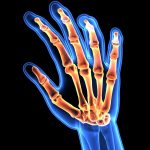
Dr. Maxwell Nartey
Professor of Symptometric Science, American School of Symptometry, NFP
World Center for Health Education and Scientific Enlightenment
Now is the time for the world to know a whole lot more about mushrooms because too many people have been receiving the wrong treatment for their ailments. Then, they have been eating the wrong foods including mushrooms.
What is a mushroom, scientifically and botanically? It is a fungus.
All fungi release spores. If these spores are inhaled, they will stick to the tissues and release mycotoxins. What do mycotoxins do? They make it impossible for the ribosomal RNA of certain cells to produce essentials. It is the non-production of essentials that predisposes a person to certain diseases. Eventually, the disease will become chronic.
For example, UTI (urinary tract infection) will be chronic, cystitis (inflammation of the bladder) will be chronic, and vertigo, nausea, pruritus (itching), etc. will also be chronic.
It was Carl Linnaeus’ binominal system, which, in 1753, identified mushrooms and separated the edible mushrooms from the non-edible ones. What led Carl Linnaeus to consider certain mushrooms to be safe to eat? It was his conclusion from observing eating habits and preferences that resulted in his plant classification.
He observed that the people who were eating certain mushrooms did not die, but Carl Linnaeus’ biggest problem was, he had no way of knowing whether the people who were eating the edible mushrooms were sick or not. If they were sick, was it because of the mushroom they ate or it was because of other factors?
The point I am making is that observation is not good enough when separating something that is toxic to the cells and DNA from something that is beneficial to the cells, chromosomes, and DNA. It is chromatography that makes this credible separation, analysis, and comparison.
The Italian-born Russian scientist Michael Tsvet invented chromatography in 1900, and from 2004 to the present, Symptometry has been using it extensively to study mushrooms and many other plants.
Poisonous mushrooms will kill the person who eats them within 48 hours by causing respiratory and heart failure, but edible mushrooms will not cause death within 48 hours. What is in edible mushrooms that makes people think they are good vegetables? Chromatography must come in at this point.
Edible mushrooms, because of their high nitrogen content, are excellent protein foods and they also have a high concentration of vitamin D, calcium, magnesium, and boron. Unfortunately, also in these mushrooms are succinic acid, mucilage, sparteine, lectin, and croton oil.
Succinic acid is an excellent infection retardant. Our Krebs cycle also produces it. It is because our Krebs cycle also produces it that eating edible mushrooms will be counterproductive. It will be counterproductive because excess succinic acid will become a nutrient blocker. Our cells need all the nutrients they can get. Therefore, by producing a nutrient blocker in the form of succinic acid, the mushroom eater is causing cell impoverishment. We must eat to nourish our cells, not to impoverish them.
Lectin is a nutrient eliminator. No matter how much calcium a person consumes, lectin will eliminate it. Without calcium, the teeth will be weak, and the bones will not be healthy. Lectin will also eliminate phosphorus, magnesium, iodine, etc. Do mushroom eaters know why they have a thyroid problem?
Mucilage glues blood impurities and turns them into blockages in the capillaries, thereby cutting off blood supply. Also, it blocks the flow of cortisol, dopamine, endorphins, enkephalin, and substance P to different parts of the body.
Without endorphins, substance P, and enkephalin, the person will not be able to tolerate pain. Without cortisol, the person will have diabetes or hypoglycemia aka low blood glucose. Also, without cortisol, the person will have inflammatory diseases.
Then, without dopamine, the person will have tremors in the neck, arms, legs, etc. Sparteine is known for causing vertigo or lightheadedness, or Meniere’s disease. Sparteine is also in beans, peas, and lentils. Therefore, which food is causing lightheadedness in a person who eats legumes and edible mushrooms? This is not an easy question to answer.
My point is, the mushroom eater is alive, but are they healthy? No, they are not.
Croton oil causes crotonism, and the symptoms of crotonism vary from person to person depending on the number of impurities they have in their blood.
The symptoms of crotonism include a burning sensation, sometimes the burning sensation is followed by vomiting, and severe diarrhea. Some individuals suffer from photophobia aka light sensitivity, colic aka bowel or stomach cramps, headache, the tendency to sleep a lot, prostration, and vertigo.
Crotonism has always resulted in heart failure and respiratory failure. Prior to heart failure, the person may experience frequent dyspnea (shortness of breath), and even palpitation.
Millions of people are suffering from lightheadedness, vertigo, or Meniere’s disease, and they claim they do not know why, or they will blame pharmaceutical drugs.
The source of vertigo is what the person ate, and it does not matter how long ago that item was eaten. It is because the metabolites of sparteine were not removed that legume eaters and mushroom eaters end up suffering from vertigo.
Which animals feed on mushrooms? Deer, bears, squirrels, certain birds, turtles, and many insects were seen feeding on mushrooms, but the biologists who followed the birds that fed on the edible mushrooms discovered how sick they were before they died. What is not good for a bird is also not good for a person.
At a certain stage, mushrooms will release spores. Do edible mushrooms also release spores? Yes, they do, but early before they become mature. It is after they have been digested that their mycotoxins will cause havoc in the form of a chronic itch, and reverse peristalsis.
During reverse peristalsis, the person feels like vomiting but can’t. As a result, they will be nauseous all day. Airsickness, seasickness, and motion sickness indicate reverse peristalsis.
Also, mushrooms’ mycotoxins will trap gas and make the person belch repeatedly after a meal. They will cause the kind of gas pain where the person must flatulate to get some relief.
Mycotoxins have an extremely negative effect on the endocrine system. They make it impossible for a man or woman to produce certain hormones, or they make a person overproduce certain hormones. There are individuals who overproduce prolactin, cortisol, or estrogens.
Also, it is important to mention that mushroom eaters have a weak immune system. Why? The answer is the mushrooms’ mycotoxins have weakened their T cells and other white blood cells to the point where they cannot fight any infection. It is for this reason that Symptometry recommends vaccination to every mushroom eater.
To be blunt and fair, most mushroom eaters no longer have an immune system. The flu vaccine, hepatitis vaccine, meningitis vaccine, etc. are their only hope and source of strength on this toxic and predatory planet. This confirms the fact that some people must be vaccinated.
Symptometry has concluded that eating a vegetable just for its protein content is wrong. The total truth about every vegetable must be known before eating it, cooked or raw. Symptometry, not nutrition, has the total truth about most vegetables, thanks to chromatography.
© Copyright 2022, The American School of Symptometry, NFP. No part of this publication may be reproduced or transmitted in any form or by any means, electronic or mechanical, including photocopying, recording, or by any information storage and retrieval system without the written permission of The American School of Symptometry, NFP. Library of Congress copyright number Txu 1-621-370, Washington D.C.


 Previous Post
Previous Post Next Post
Next Post